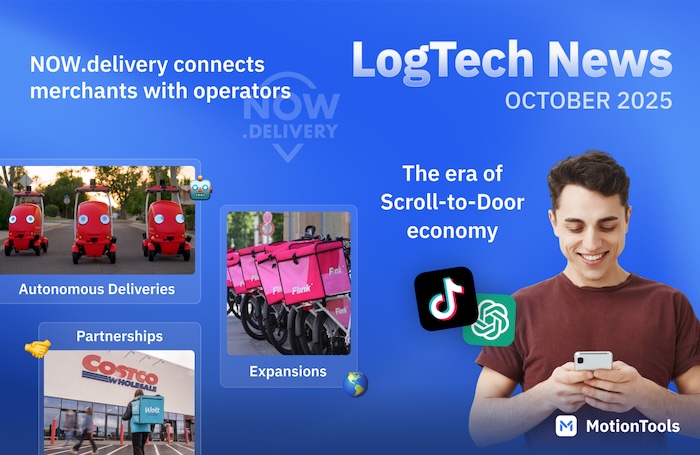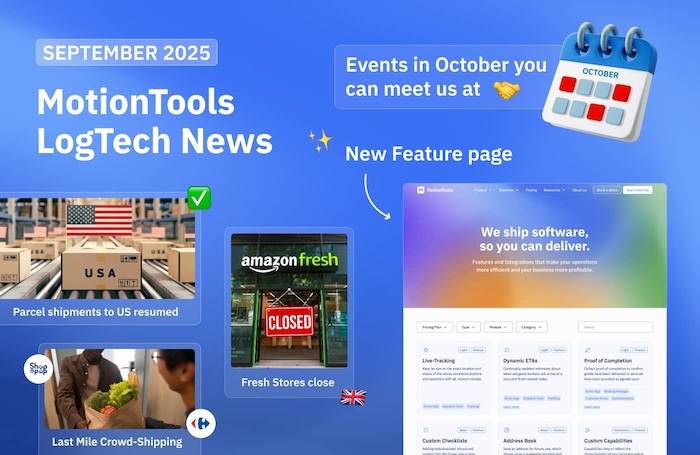Have you heard the story of the 10 hours 43 minutes sales call? Steven Weinstein, an employee of Zappo’s set an internal record, answering a call from a customer who needed some help with an order of a few items. Weinstein said he took only a single break of the effortless and (almost) endless conversation to go to the bathroom, while a colleague brought food and water during the call.
A bouquet of flowers with a handwritten letter, an exclusive meeting over the weekend or the production of an extravagant singleton. There are many examples of seemingly obsessive behaviours companies have exercised, which testify how much they care about their customers. How important is it to players in the transportation area to deliver outstanding customer service?
Customer satisfaction is the highway to business growth
“How likely is it that you would recommend [brand] to a friend or colleague?” The answer to this question on a 0-10 scale defines the Net Promoter Score of a company, one of the most powerful indicators of a positive customer experience.
Respondents are grouped as follows:
- Promoters (score 9-10) are loyal enthusiasts who will keep buying and refer others, fueling growth.
- Passives (score 7-8) are satisfied but unenthusiastic customers who are vulnerable to competitive offerings.
- Detractors (score 0-6) are unhappy customers who can damage your brand and impede growth through negative word-of-mouth.
Subtracting the percentage of Detractors from the percentage of Promoters yields the Net Promoter Score, which can range from a low of -100 (if every customer is a detractor) to a high of 100 (if every customer is a promoter).
Additional metrics that help quantify the quality of your customer experience are Customer Satisfaction Score (CSAT), portraying your customers satisfaction on a particular interaction and Customer Effort Score (CES), which measures the ease with which customers were able to have their issue successfully resolved or complete an action (like making a purchase).
A positive customer experience is said not only to reduce churn and increase word-of-mouth for your brand, in a study by Walker, 86% of consumers declare they are willing to pay an extra for a better customer experience .
How scale-ups delight their customers.
In a FastCompany article, Mary Winfield, VP Customer Experience and Trust at Lyft uses a cooking metaphor to explain how her team is constantly optimising their customer service in order to elevate the NPS of the ride-hailing service. “Good customer service is just like cooking. You need to start with a solid recipe and tweak to make it your own.”
Additionally to asking questions like "Did we resolve?" (CSAT)”, “How easy was it? (CES)” and quantifying the likeliness of customers to recommend the service (NPS), Lyft asks the questions “Do you think we care about you?” Winfield explains that she is looking to evoke responses like, “You took the burden off of me” or “You engaged with me as a human being.”
Without doubt engaging with customers takes a lot of “Fingerspitzengefühl” (situational awareness + the ability to respond most appropriately and tactfully). Winfield describes one of the most personal, emotional, and complicated interactions to be resolving a situation where a customer left a phone in a Lyft. “It is impossible to rely on email to resolve this situation. The recipe to resolve the issue requires human contact with equal portions of urgency and empathy. From there, it can be adjusted. Maybe instead of following the usual steps, with the driver returning immediately to a drop-off destination at, say, a concert hall, the driver can ask instead if the rider can meet after the show. With the assurance that the phone was found and in safe hands, the rider can enjoy the show.”
Who is the grandmaster of Customer obsession?
Over the last years, the term Customer obsession has been used to illustrate the outstanding level of customer-centricity achieved by companies such as HubSpot, Slack, Netflix and Zappo’s. Topping a list of 14 leadership principles Customer obsession is inextricably linked with the success of Amazon.
Let’s take a look at their official definition of Customer obsession:
Leaders start with the customer and work backwards. They work vigorously to earn and keep customer trust. Although leaders pay attention to competitors, they obsess over customers.
In a celebrated interview, Jeff Bezos, Founder & CEO of Amazon explains why he believes Customer obsession matters most.
“There are many ways to center a business. You can be competitor focused, you can be product focused, you can be technology focused, you can be business model focused, and there are more. But in my view, obsessive customer focus is by far the most protective of Day 1 vitality. Why? There are many advantages to a customer-centric approach, but here’s the big one: customers are always beautifully, wonderfully dissatisfied, even when they report being happy and business is great. Even when they don’t yet know it, customers want something better, and your desire to delight customers will drive you to invention on their behalf. No customer ever asked Amazon to create the Prime membership program, but it sure turns out they wanted it, and I could give you many such examples. Staying in Day 1 requires you to experiment patiently, accept failures, plant seeds, protect saplings, and double down when you see customer delight. A customer-obsessed culture best creates the conditions where all of that can happen.”
No one said it was easy …
From our own experience of building up M‑TRIBES we know that balancing customer experience and profitability of a business is incredibly hard. At a ProductCon talk, Gibson ‘Gibb’ Biddle, Former VP of Netflix explains that in his opinion Customer obsession is not simply listening to the customer and focusing on building a better product than your competitor, but rather fostering a healthy preoccupation with customers’ unanticipated, future needs. “Put the customer in the center of everything you do,” Gibb advised, “so that you begin to see the product through their eyes.”
Gibb explains that consumer science — the scientific method of forming hypotheses, then testing them – is the best way to build a culture of Customer obsession and to discover what delights customers in hard-to-copy, margin-enhancing ways, which are the basis for profitability.
… no one said it would be this hard.
Unfortunately reading a blog post can only serve as a starting point or quick reminder to turn your company into a “customer-obsessed” organisation. A whole set of behaviours derived from this overlaying management principle needs to be hacked into the very culture of your businesses and balanced with your financial agenda. Vision Critical lists seven “habits of highly customer-centric companies”. What’s your score on the following questions?
- Do you provide easy and quick help with real people?
- Are you meticulous about the customer experience?
- Do you get on the front lines of customer interactions instead of remaining behind the desk?
- Do you instill a customer-obsessed culture through internal communications?
- Do you align marketing and customer service departments on ROI metrics?
- Do you value customer quality over customer quantity?
- Do you factor in customer satisfaction scores as part of employee compensation and bonus plans?
Can we help you ‘Matter faster’?
As a technology partner for ambitious transportation startups, corporates and SMEs, MotionTools goes beyond providing standard software to power demand and supply of transportation services.
Answering the growing need for market differentiation, the component based architecture of our technology platform gives businesses unprecedented flexibility to launch and iterate highly individual services in the areas of ride-hailing, shared mobility and smart deliveries.
Seamless connections to the world’s best tools for user acquisition, activation and analytics help create individual operating environments that allow your company to deliver delightful and effective customer experiences from end to end.
Your success is our business.
Beyond technology, MotionTools offers a range of consulting services for your organisation and helps you connect you with potential future customers ahead of your launch. We achieve this by planning, hosting and analysing in-market co-creation events inviting early adopters into the discovery and validation stage of your business. At any stage of your company’s journey our experts in the areas of product, operations, sales and marketing are ready to complement your team, helping you to maximise every customer interaction.
Learn more about our professional services here or get in touch.











